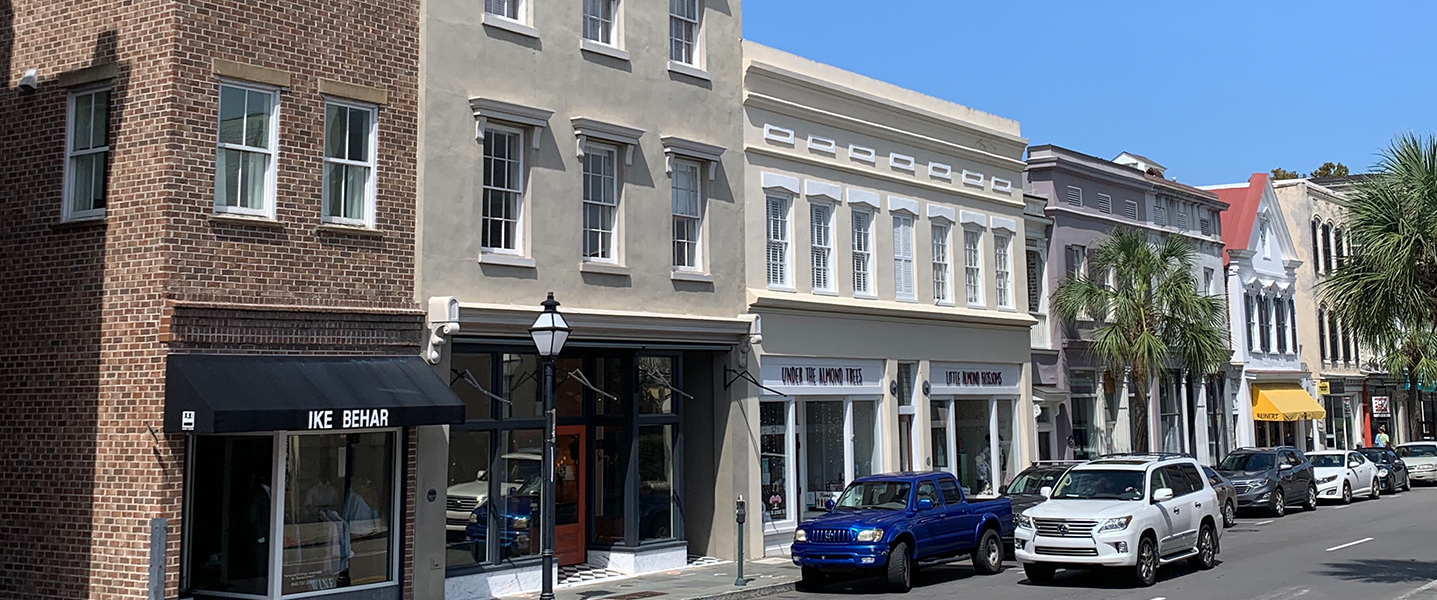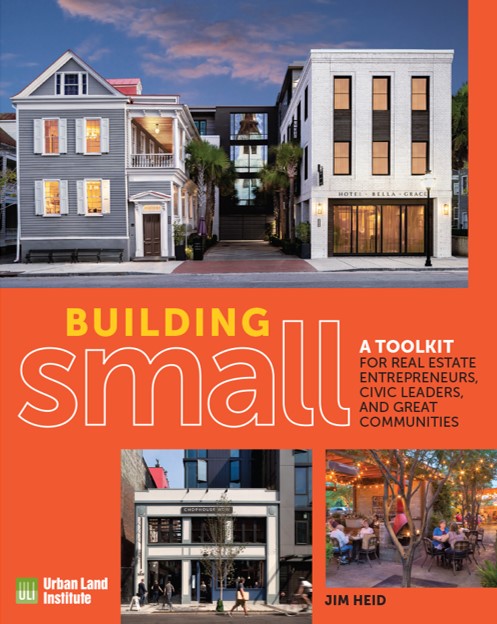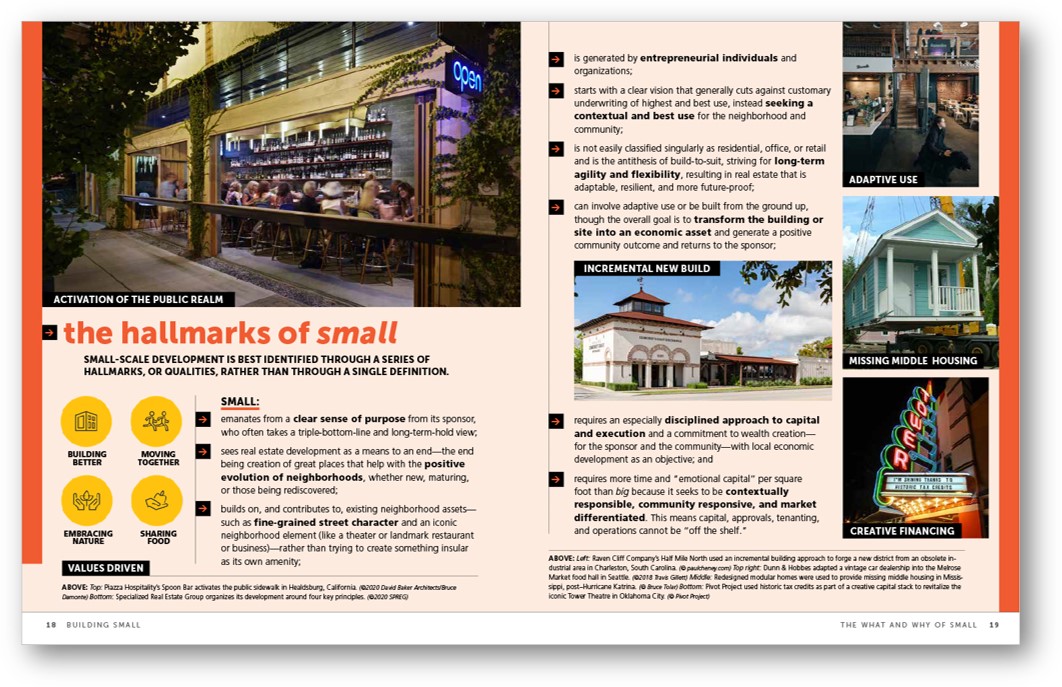8 Main Street Communities Empowered by The Hartford Small Business Accelerator Grants
Eight communities have been selected to receive the 2025 Small Business Accelerator grants, in partnership with The Hartford.

As spring emerges and we think about what is on the other side of the pandemic for our communities and its small businesses, my new book published by the Urban Land Institute provides a refreshing and inspiring view of what is possible. Started three years before the onset of Covid-19, Building Small: A Toolkit for Real Estate Entrepreneurs, Civic Leaders and Great Communities provides a What, Why and How of small-scale, incremental development or Small. The book shares the observations, findings and research coalesced from tours of over 15 cities, interviews with 100 developers, city officials, non-profits and agency staff. The primary thesis of Building Small is that smaller, incremental forms of adaptive reuse and ground-up real estate development create more enduring and authentic communities while serving to incubate and support a more vibrant, resilient, local economy.

This is not new news for Main Street proponents. What makes main street - main street - is both its physical form and sense of humanity. Through the combination of their smaller size, flexible design and individual character, Main Street buildings attract the kinds of locally owned businesses that make communities more authentic, while ensuring local dollars stay in the local economy.
In addition to the data Building Small provides to support this idea, it also highlights that authentic, walkable kinds of places are where talent – and therefore employers – are going. The punch line is that if civic leaders want jobs, place matters. And the unique, incremental nature of Small builds much better places than the often homogenized, formulaic nature of many of today’s bigger development solutions.
But what does Small mean? Building Small provides a counterpoint to real estate industry’s tendency to focus on just quantitative outcomes. Instead, the hallmarks of Small offers ten characteristics to provide a more holistic definition. The hallmarks include the motivations of the sponsor; a commitment to a broader scorecard of success; a more entrepreneurial mindset; and a worldview that sees real estate as the means to an end – not the end itself. So, what would the Small end be? More thriving, equitable and interesting places that create a stronger local economy.
Written to appeal to, and inform, several audiences, Building Small recognizes that to change the way we build community will require aligning many actors.
 Finally, Building Small wants to help engaged citizens to better understand the nuts and bolts of the real estate development process so they can be more effective and constructive when asking for better development in their communities. Building Small explains - in layperson’s terms - how the development process works and the incredible inertia that sits between a good idea and the reality we often see. The challenges of financing, the implications of drawn-out entitlements, and the costs of unrealistic requests are explained along with examples of how community members can help bridge the gap to get the kinds of development they are seeking.
Finally, Building Small wants to help engaged citizens to better understand the nuts and bolts of the real estate development process so they can be more effective and constructive when asking for better development in their communities. Building Small explains - in layperson’s terms - how the development process works and the incredible inertia that sits between a good idea and the reality we often see. The challenges of financing, the implications of drawn-out entitlements, and the costs of unrealistic requests are explained along with examples of how community members can help bridge the gap to get the kinds of development they are seeking.While Building Small champions smaller, incremental forms of development, it does not set out to disparage ‘big’ development. Through example and logic, the mutual partnership and synergy of a big/small pairing can seen in creating both place and value. As stated early in the book, the r’aisson d’etre for Building Small is to raise both the understanding and awareness of how powerful Small can be for building community – and through the multi-faceted value proposition that it presents - ensure that civic leaders, citizens and the design industry all give small serious consideration to the alternative of Small, when thinking about redevelopment or new development.
Small is more relevant than ever. Over the past year, while local business owners struggled to keep their doors open and landlords had to deal with deferred or abated rents, community members had a re-awakening as to how important local businesses are to their local economy and psyche. This was evidenced through an outpouring of ‘contactless’ support provided through increased take-out and local, online shopping; more generous tips to help out beleaguered staff; or donating to GoFundMe and ‘bail out’ campaigns as SMB’s struggled to make payroll. The federal government recognized the importance of Small, dispersing $750 billion to small businesses, and several big corporations saw both an opportunity and a need to rally support for Small with campaigns and grant programs. Last year, and the future for Building Small, can be optimistically summed up in my favorite new mantra #toosmalltofail.
Building Small coalesces the benefits and value emanating from the work of many. The preservationists who knew early on that the soul of their communities lie in their historic buildings. Or the generation of urbanists who have helped articulate the art and science of a high-quality public realm. And now to the artisanal and small business owners who are following their dreams and passion to create one-of-a-kind, unique places that help define the essence of the community in which they reside. Building Small tells a great story of the successful outcomes of these all efforts, while providing the tools needed by the broad coalition of actors who must play a role in realizing a Small future.